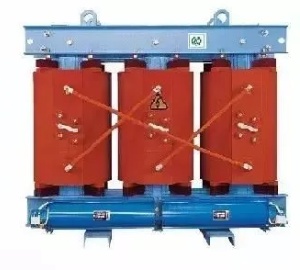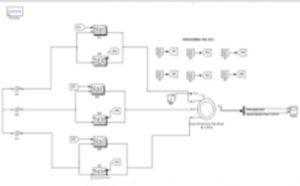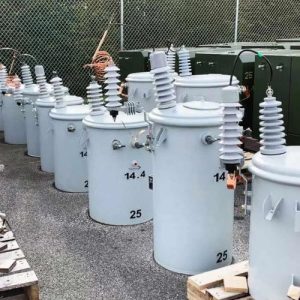Electronic Components Supplier | Transformers, Inductors, Inverters
The capacity of a transformer, also known as rated capacity, refers to the maximum power that the transformer can continuously output under rated voltage and rated current. The size of the transformer's capacity determines how much electrical load it can handle, which is an important parameter to consider when designing a transformer. Generally, the larger the capacity of the transformer, the stronger its power supply capability. When selecting a transformer, it is necessary to reasonably determine its capacity according to actual electricity demand.

The power of a transformer refers to the work done in a unit of time, which reflects the efficiency and capacity of the transformer to convert electrical energy. The power of a transformer usually refers to its actual output active power, that is, the actual power transmitted by the transformer. The size of active power directly determines the working efficiency and energy conversion efficiency of the transformer. In an ideal situation, if the power factor of the transformer is equal to 1, then its output active power will be equal to its capacity. However, in actual operation, due to the existence of various losses and factors, the power factor of the transformer is often less than 1, so its actual output active power will also be less than its capacity.
Although both capacity and power are important parameters to describe the performance of a transformer, there are differences between them. Capacity is more focused on describing the maximum load that a transformer can handle, while power is more concerned with the actual energy that a transformer can transmit. When designing and selecting a transformer, it is necessary to consider these two parameters comprehensively according to the actual situation to ensure that the transformer can meet the needs of the power system and operate efficiently.

There are many factors that affect the capacity of a transformer, including the ratio of input and output voltages, the ratio of input and output currents, the efficiency of the transformer, the operating temperature, the cooling method, and the load, etc. These factors will all have an impact on the capacity and power of the transformer, so we need to fully consider the influence of these factors when designing and using transformers.
During operation, the electrical load that the transformer should bear should be maintained at about 75% to 90% of its rated capacity. If the actual load is less than 50% of the rated capacity, then you should consider replacing the transformer with a smaller capacity to improve operating efficiency; while if the actual load is greater than the rated capacity, you should immediately replace the transformer with a larger capacity to ensure the stable operation of the power system.
The capacity and power of a transformer are important indicators for evaluating its performance. Their size and selection are crucial for ensuring the stable operation and efficient transmission of the power system. When designing and selecting a transformer, we need to consider various factors comprehensively and determine the appropriate capacity and power size according to the actual situation, to ensure that the transformer can meet the needs of the power system and operate efficiently. At the same time, during operation, we also need to monitor and adjust the load of the transformer to ensure that it is always in the best working condition.







